Introduction To Snakes: Characteristics And Features
Snakes are fascinating creatures with a unique set of characteristics and features that make them stand out from other reptiles. These creatures are legless and elongated, and their bodies are covered in scales. They come in a wide range of sizes, from tiny thread snakes to giant reticulated pythons.
One of the most distinctive features of snakes is their ability to swallow their prey whole. Their teeth are curved backwards, helping them to grip onto their prey while they move it back and forth to force it down their throat. Many species of snakes are also venomous, using a combination of fangs and toxins to subdue their prey.
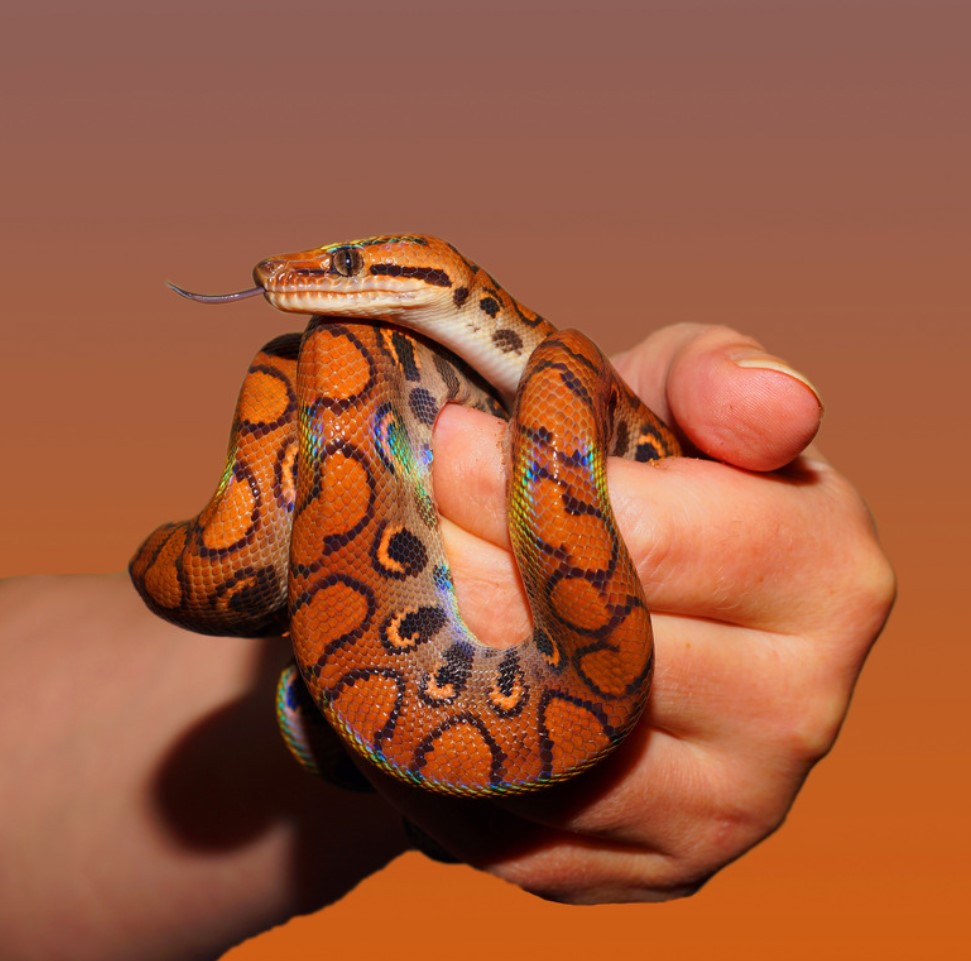
Another remarkable feature of snakes is their sense of smell. They have a specialized organ in their mouth known as the Jacobson’s organ, which allows them to detect chemical cues in the environment that help them locate potential prey, mates, or predators.
- Snakes are fascinating creatures with unique characteristics and features.
- They are legless and elongated, with bodies covered in scales.
- Snakes have the ability to swallow their prey whole and many species are venomous.
- They also have a specialized sense of smell, using the Jacobson’s organ to detect chemical cues in the environment.
| Characteristic | Description |
|---|---|
| Legless | Snakes lack legs and instead move by slithering across the ground. |
| Scales | Their bodies are covered in scales that provide protection and aid in movement. |
| Swallowing Prey Whole | Snakes have the ability to ingest prey that is significantly larger than their own head. |
| Sense of Smell | The Jacobson’s organ in a snake’s mouth is used to detect chemical cues in the environment. |
Overall, snakes are a fascinating group of animals with many unique characteristics and features. Despite their often fearsome reputation, they play important roles in ecosystems around the world.
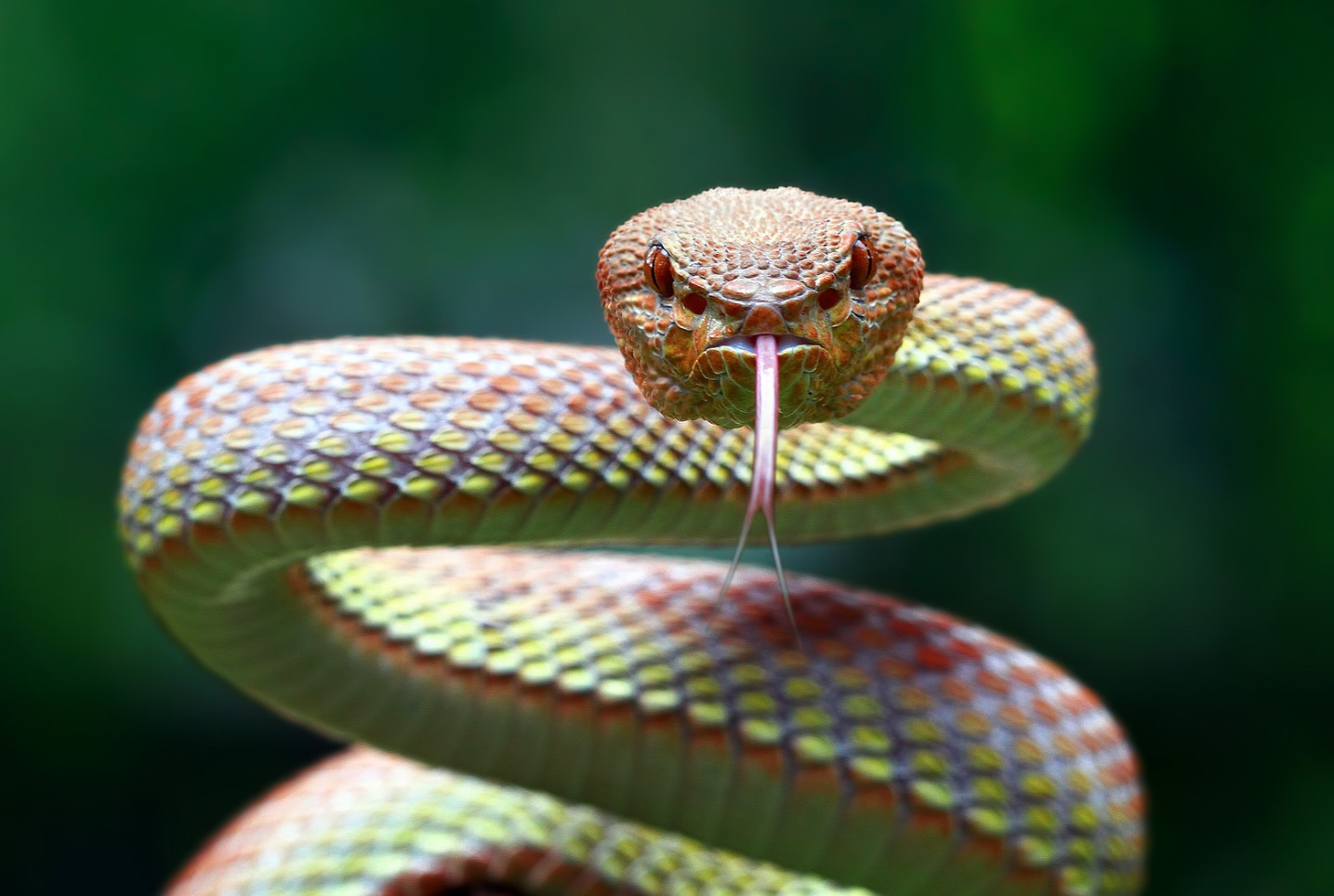
The Evolution Of Snakes: From Legged To Legless
Snakes have captured the imagination of human beings since time immemorial. Their unique features and fascinating evolution has been the subject of study and research for centuries. One of the most intriguing aspects of snakes is their evolution from legged to legless forms. This unique transformation has allowed snakes to adapt to their environments and become successful predators.
The evolution of snakes can be traced back to over 150 million years ago, during the Late Jurassic period. At this time, snakes were still legged and resembled their lizard-like ancestors. However, over time, snakes began to evolve to better suit their environments. One of the earliest adaptations was the elongation of the body, which allowed snakes to move more efficiently through narrow spaces and hunt prey.
Another key adaptation was the loss of limbs. Scientists believe that this was an evolutionary response to the changing climate and availability of resources. As the earth became warmer and drier, snakes were forced to adapt to the changing landscape. Losing their limbs allowed them to move faster and more efficiently through the underbrush, and also allowed them to hunt prey more effectively.
The process of evolution is a slow and gradual one, and over time, snakes continued to evolve and develop new features. Today, there are over 3,000 species of snakes, each with their own unique traits and adaptations. Some of these features include venomous fangs, camouflage, and specialized scales for climbing trees or burrowing underground.
- Snakes have evolved from legged to legless forms over 150 million years
- Their elongated bodies and loss of limbs were key adaptations to better suit their environments
- Today, there are over 3,000 species of snakes with unique traits and adaptations
| Species | Characteristics |
|---|---|
| King Cobra | Highly venomous, with hooded head and impressive size |
| Boa Constrictor | Non-venomous, constricts prey to death, has a muscular body and specialized scales for gripping prey |
| Rattlesnake | Highly venomous, has a rattle on the end of its tail to warn predators, and specialized heat-sensing pits to detect prey |
In conclusion, the evolution of snakes from legged to legless forms is a fascinating and complex process that has allowed them to become one of the most successful animal groups on the planet. By losing their limbs and developing specialized adaptations, snakes have been able to adapt to a wide range of environments and become efficient predators. Today, snakes continue to thrive in many different habitats, and their unique features and adaptations continue to fascinate and inspire people around the world.
Types Of Snakes: Venomous And Non-venomous
Snakes are fascinating creatures and are found on every continent except Antarctica. There are about 3,000 different known species of snakes in the world, and they come in different colors, sizes, and shapes. Based on their venomous or non-venomous nature, snakes are categorized into different groups.
Venomous snakes are those that secrete toxins from their fangs or mouth, which they use to immobilize their prey or defend themselves from predators. Some common venomous snake species include cobras, vipers, and coral snakes. Non-venomous snakes, on the other hand, do not produce venom and are generally harmless to humans. Species such as pythons, boas, and rat snakes are considered non-venomous.
- It is essential to understand the differences between venomous and non-venomous snakes to protect oneself from potential threats from snakes.
- When it comes to venomous snakes, it is crucial to be able to identify different species based on their physical characteristics and behavior to react appropriately in case of a snakebite.
- Most venomous snake species have hollow, retractable fangs that they use to inject venom. The size and shape of the fangs vary between species, and some species have fangs in the front of their mouths while others have fangs located in the back.
Non-venomous snakes, although not considered dangerous, can still inflict bites that can cause infections, so it is vital to handle them with care. Some non-venomous snakes can also constrict their prey to kill them, such as pythons and boas.
| Venomous Snakes | Non-Venomous Snakes |
|---|---|
| Cobras | Pythons |
| Vipers | Boas |
| Coral Snakes | Rat Snakes |
In conclusion, understanding the different types of snakes is essential, particularly if you live, work, or spend time in areas where snakes are common. Knowing how to identify venomous and non-venomous species can help keep you safe and prevent unnecessary snake deaths.
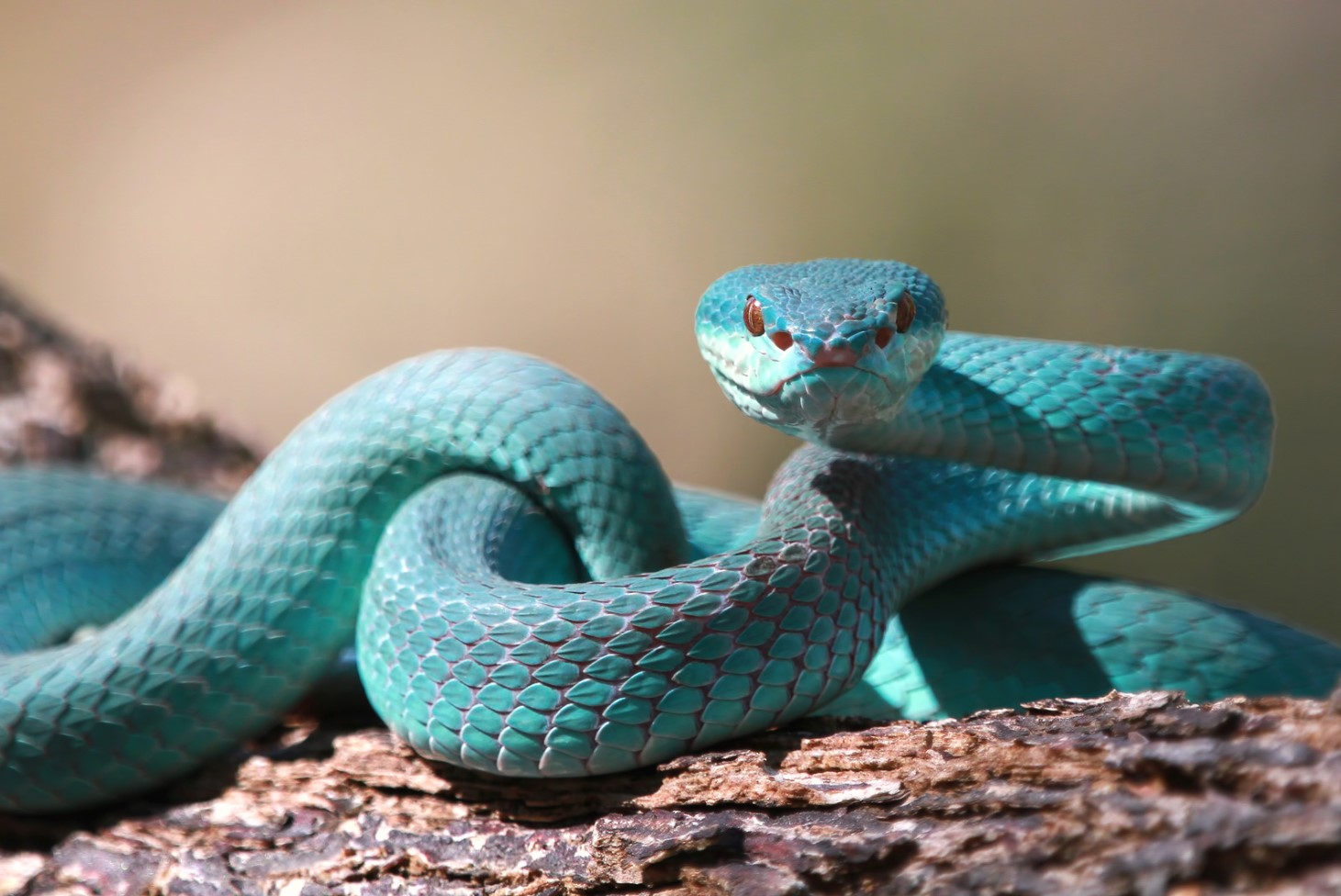
Characteristics Of Venomous Snakes: Fangs And Toxins
Snakes are one of the most fascinating creatures on the planet because of their unique physical features and the incredible adaptations they’ve developed. There are over 3,000 species of snakes, and while the majority of them are harmless, some species are venomous and can pose a serious threat to humans. The characteristics of venomous snakes, such as their fangs and the toxins they produce, play a crucial role in their survival and their ability to hunt and defend themselves from predators.
Venomous snakes have highly specialized teeth called fangs that they use to deliver venom into their prey or predators. These fangs are hollow and have a channel through which venom can be injected. While most venomous snakes have long, curved fangs that are visibly visible when the snake opens its mouth, some highly venomous snakes like the coral snake have small, almost imperceptible fangs located at the back of their mouths.
- A venomous snake’s fangs will have a curved or hooked shape.
- The length and width of the fangs will vary depending on the species of snake.
- Some venomous snakes, like vipers, have retractable fangs which are unique to their species.
The toxins produced by venomous snakes are highly specialized and serve a variety of purposes. For example, some snakes produce neurotoxins, which affect the nervous system and can cause paralysis. Others produce hemotoxins, which affect the blood and can lead to severe internal bleeding. Some venomous snakes, like the rattlesnake, have a combination of both neurotoxins and hemotoxins. The potency of snake venom can vary depending on the species, the age of the snake, and the geographic region in which it lives.
| Snake Species | Toxin Type | Geographic Region |
|---|---|---|
| Rattlesnake | Neurotoxin/Hemotoxin | North America |
| Cobra | Neurotoxin | Asia and Africa |
| Puff Adder | Hemotoxin | Africa |
Understanding the characteristics of venomous snakes is crucial for those living in areas where these species are present. Knowing how to identify venomous snakes, such as by their fangs, can help prevent bites and even save lives. It’s also important to remember that venomous snakes play a vital role in their ecosystems and should be respected and protected.
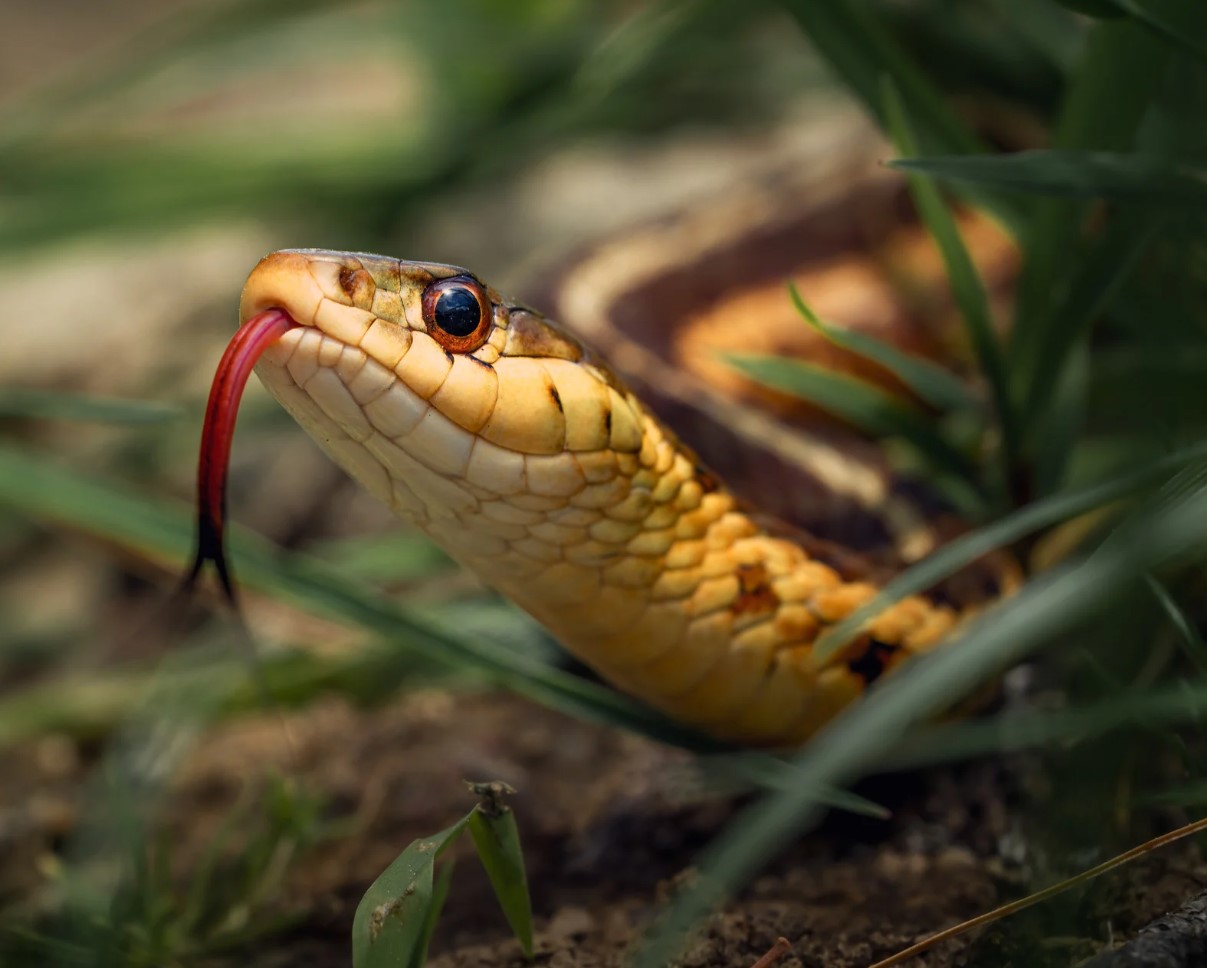
Non-venomous Snakes: Constrictors And Boas
When you think of snakes, venomous species like rattlesnakes or cobras might come to mind. However, there are plenty of non-venomous snakes in the world that are just as fascinating. In fact, many non-venomous snakes are constrictors or boas, which means they are skilled at squeezing their prey until they suffocate. This is a highly successful hunting strategy that has enabled these snakes to thrive in a variety of environments.
Constrictors and boas are different types of non-venomous snakes, but they share some similarities. For example, both types of snakes are muscular and have the ability to constrict their prey. Constrictors tend to be thinner and more agile, while boas are often thicker and more powerful. Both types of snakes are commonly found in tropical and subtropical regions around the world.
If you encounter a constrictor or boa in the wild, it’s important to remember that they are not dangerous to humans unless provoked. These snakes are more interested in hunting small mammals and birds than in attacking humans. In fact, many species of constrictors and boas are popular pets for snake enthusiasts because of their docile nature and unique markings.
- There are many species of non-venomous snakes that are constrictors, including:
- – Ball pythons
- – Burmese pythons
- – Boa constrictors
- – Green anacondas
- – Reticulated pythons
Each of these snakes has its own unique characteristics and characteristics, but they are all expert hunters that can take down prey much larger than themselves. Constrictors and boas use their powerful muscles to squeeze their prey until it suffocates or is unable to breathe. They then swallow their prey whole, which can take several hours or even days depending on the size of the meal.
| Snake Species | Length | Habitat | Diet |
|---|---|---|---|
| Ball Python | 3-5 feet | Central and West Africa | Small mammals, birds, and reptiles |
| Burmese Python | 10-20 feet | Southeast Asia | Mammals, birds, and reptiles |
| Boa Constrictor | 6-10 feet | Tropical South America | Small mammals, birds, and reptiles |
| Green Anaconda | 20-30 feet | Tropical South America | Large mammals, birds, and reptiles |
| Reticulated Python | 20-30 feet | Southeast Asia | Mammals, birds, and reptiles |
While they are not venomous, these snakes should still be treated with respect and caution. If you encounter a constrictor or boa in the wild, it’s best to keep a safe distance and avoid provoking the snake. However, if you are interested in keeping one of these fascinating creatures as a pet, be sure to do your research and make sure you can provide the proper care and environment they need to thrive.
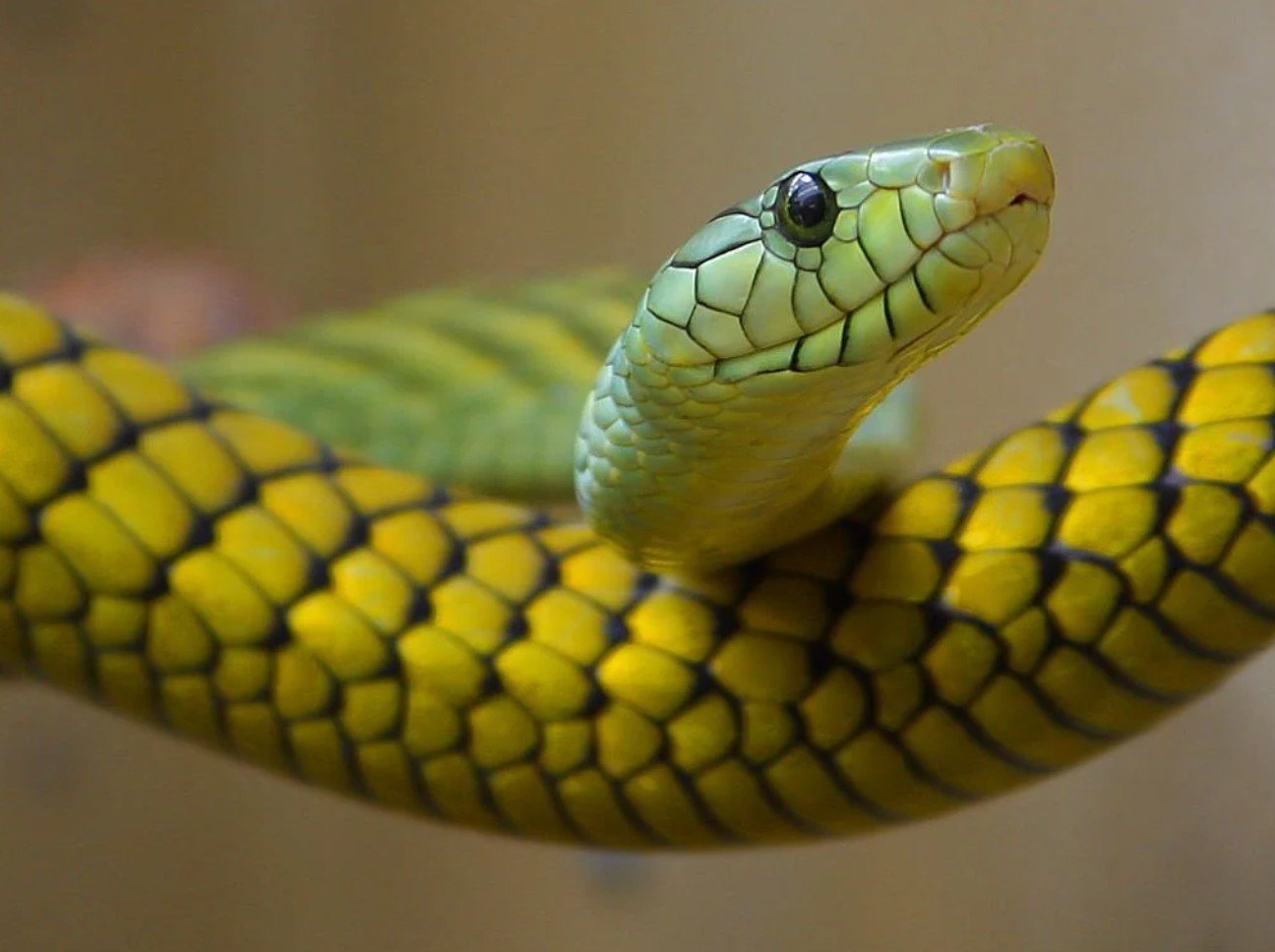
The Anatomy Of Snakes: Internal And External Structure
When we think of snakes, we often think of their long, slithering bodies and their scales. But did you know that snakes have a complex internal structure as well? Understanding the anatomy of snakes is important not only for scientific purposes, but for those who share their habitat with these reptiles.
One of the most striking features of snakes is their elongated body. Unlike most animals, snakes have a spine that runs nearly the entire length of their bodies. This allows them to move in a unique undulating motion. Additionally, snakes have a large number of ribs, often more than 200, which are able to move independently. This allows flexibility in their body, enabling them to contort themselves into tight spaces and grasp their prey with ease.
- Snakes have a forked tongue that they use to smell their surroundings.
- Their jaws are not fused together, allowing them to swallow prey that is much larger than their head.
- Snakes have no eyelids, but instead have a transparent scale that protects their eyes.
Internally, snakes have a unique structure as well. Snakes have only one functioning lung, as their other lung is only partially developed. This is because snakes are able to exchange gases through their skin, allowing for some respiration even when their throat is full with prey. Additionally, snakes have a specialized organ called the Jacobson’s organ, which allows them to detect chemical stimuli in the air. This organ, located in the roof of their mouth, is what enables them to track prey and navigate their environment.
| External Anatomy | |
|---|---|
| Scales | Snakes are covered in a layer of scales which help protect them, aid movement, and deter parasites. Snakes have many types of scales, including keeled scales along their back and smooth scales on their belly. |
| Fangs | Venomous snakes have distinct fangs which enable them to inject venom into their prey. These fangs vary in size and location depending on the species. |
| Eyes | Snakes have eyes that are adapted for low-light conditions. They are able to sense movement and detect shapes, but do not have the ability to see color. |
Overall, the anatomy of snakes is fascinating and complex. By understanding their unique traits and capabilities, we can better appreciate these creatures and coexist with them in their natural habitats.
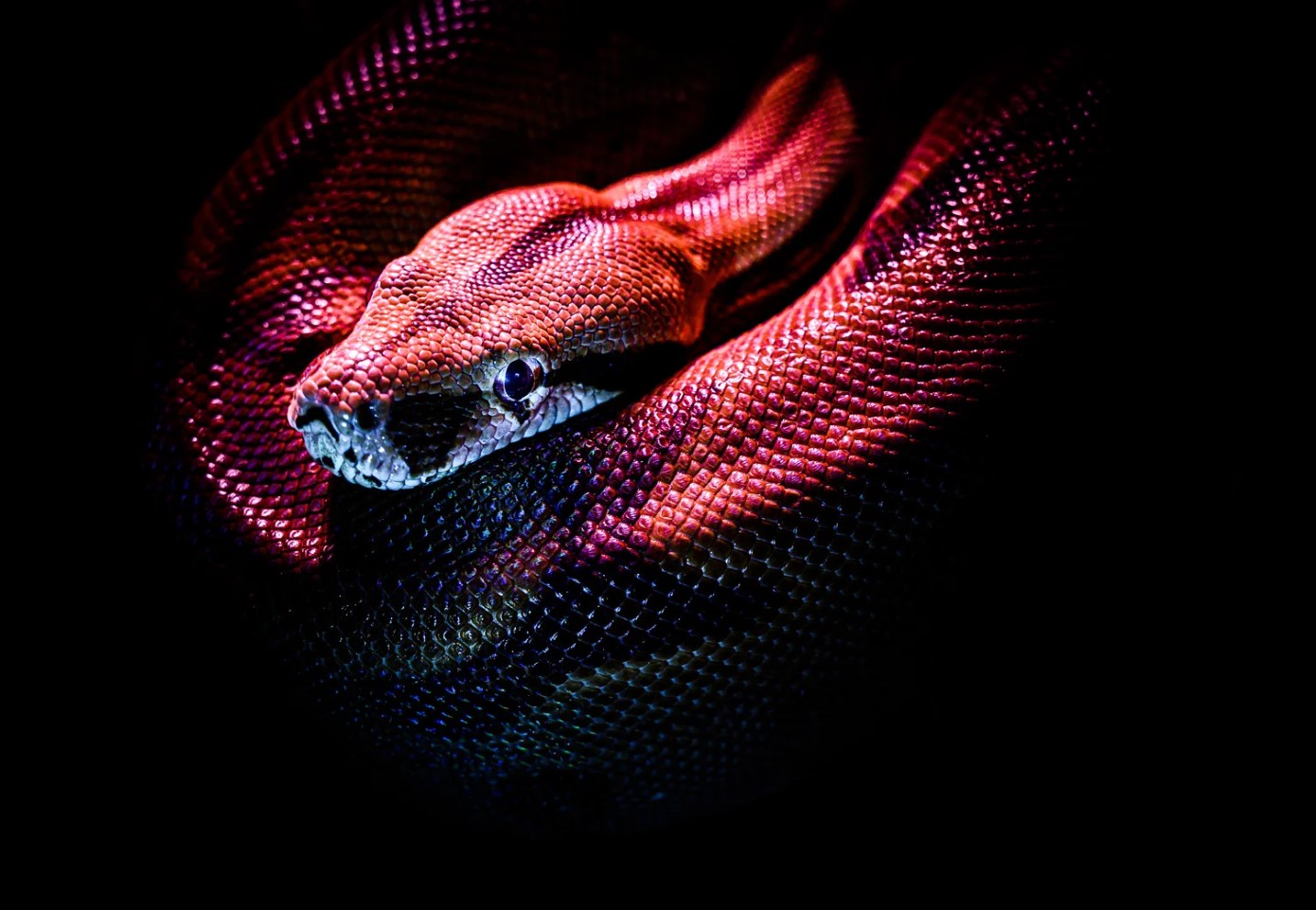
Snake Skin: Characteristics And Types Of Scales
As one of the defining features of snakes, it’s no wonder that their skin is a fascinating topic of discussion. In fact, the skin is so important to a snake, it must regularly shed or molt it in order to continue growing. But what exactly makes snake skin so unique? Let’s explore the characteristics and types of scales that make up a snake’s skin.
Firstly, snake skin is made up of a series of overlapping scales, which provide a tough, protective layer for the snake. These scales are typically made of keratin, the same protein found in human hair and nails. Unlike human skin, snake skin does not stretch, which means the scales need to be shed in order for the snake to grow. This process of shedding old skin is called ecdysis.
- There are two main types of snake scales:
- Body scales: These are large scales that cover the snake’s body and give it a smooth appearance. Body scales can be arranged in different patterns, depending on the species of snake.
- Underside scales: These are smaller scales that cover the snake’s belly. They help the snake grip surfaces and move more easily.
Another interesting feature of snake skin is that it can vary greatly depending on the species of snake. For example, some species have scales that are smooth and glossy, while others have keeled scales that are ridged and textured. Additionally, some species of snake have brightly colored scales, while others are more muted. These differences in color and texture can help snakes blend in with their surroundings or deter predators.
Overall, snake skin is an amazing example of how the natural world has adapted to meet the needs of different species. From its tough, protective scales to its ability to change color and texture, snake skin is a fascinating and important part of what makes snakes such unique creatures.
Breeding Habits Of Snakes: Egg Laying And Viviparity
Snakes are fascinating creatures with a unique set of traits and characteristics. One of the most intriguing aspects of their life cycle is their breeding behavior, which varies greatly depending on the species. Some snakes lay eggs, while others give birth to live young. In this post, we will explore the breeding habits of snakes and delve into the differences between egg-laying and viviparity.
Egg-Laying Snakes
Most species of snakes are oviparous, meaning they lay eggs to reproduce. The eggs are fertilized inside the female’s body and develop in protective membranes before being laid. The number of eggs laid by a female snake varies depending on the species, with some laying only a few while others lay dozens. Once laid, the eggs are left to develop on their own, with no maternal care provided. The incubation period of the eggs depends on the temperature and humidity level of the environment, with some species taking only a few weeks to hatch while others may take several months.
Viviparous Snakes
While most snakes lay eggs, some species give birth to live young. This reproductive strategy is called viviparity. In viviparous snakes, the fertilized eggs are retained inside the female’s body and develop into offspring. The young snakes are born fully formed and active, with no need for additional care from the mother. Species that use viviparity as their breeding strategy are typically found in colder climates where incubating eggs would be difficult or impossible.
Conclusion
In summary, snakes have a diverse range of breeding habits, with some laying eggs and others giving birth to live young. These strategies have evolved over time to best suit the environmental conditions and survival needs of each species. Understanding the differences between egg-laying and viviparous snakes is important for snake enthusiasts and researchers alike. By further exploring snake breeding habits and behaviors, we can gain a deeper appreciation for these fascinating creatures.
Feeding Habits Of Snakes: Carnivorous And Diet Variations
Snakes are fascinating creatures because of their unique and bizarre characteristics. One of the most intriguing aspects of snakes is their feeding habits, which are entirely carnivorous. Unlike herbivorous animals, snakes do not consume plant matter or vegetation for energy. Instead, they hunt and eat prey, which varies depending on the species of snake.
There are many different types of snakes, and each has its diet preferences. Generally, snakes consume a range of foods, such as rodents, birds, insects, amphibians, and other reptiles. Some species favor a particular type of prey, while others are opportunistic and will eat whatever they can find. The feeding habits of snakes also vary depending on their size and location.
- Some smaller snakes, such as ring-necked snakes, mainly feed on insects and small invertebrates.
- Medium-sized snakes, such as garter snakes, prefer to consume amphibians and small mammals like mice or rats.
- Larger snakes, like pythons and boas, can eat much larger prey, such as deer, pigs, and even other snakes.
Snakes’ feeding habits also depend on their environment and their behavior. Some snakes are ambush predators, waiting in one spot for prey to walk by. Others hunt actively, using stealth and speed to catch their food. Some snakes, like constrictors, kill their prey by squeezing it tightly until it suffocates before swallowing it whole.
| Snake Species | Diet Preferences |
|---|---|
| Burmese Python | Rodents, birds, and mammals |
| Copperhead | Small mammals and birds |
| King Cobra | Other snakes, lizards, and mammals |
In conclusion, snakes have a diverse range of feeding habits and preferences. Their diets vary, depending on factors such as their size, environment, and behavior. However, one thing is consistent about snakes – they are all carnivorous and consume other animals to survive.
Distribution Of Snakes: Global Habitat And Range
Snakes are some of the most fascinating creatures on the planet. Their unique features and characteristics make them a topic of interest for many people around the world. However, one aspect of snakes that is often overlooked is their distribution and global habitat range. To better understand where snakes live and how they have adapted to their environments, it is important to take a closer look at this aspect of their lives.
Snakes can be found on every continent except for Antarctica. They live in a variety of habitats, including forests, deserts, grasslands, mountains, and even in bodies of water such as rivers and oceans. Some species prefer dry environments, while others thrive in humid climates. The wide range of habitat preferences of snakes is one of the reasons they have been able to spread to so many different parts of the world.
There are over 3,000 species of snakes, and their distribution varies widely depending on the species. Some species are found only in small regions, while others can be found across multiple continents. For example, the green anaconda, one of the largest species of snake, is found in the Amazon Basin of South America, while the black mamba, one of the most venomous snakes in the world, is found in various parts of Africa.
- Snakes are often able to adapt to different types of habitats, allowing them to thrive in many different regions of the world
- Some species of snakes are only found in small regions, while others can be found across multiple continents
- The distribution of snakes is influenced by factors such as climate, geology, and the availability of food and water
The complex relationship between snakes and their environments is influenced by a variety of factors. Snakes are cold-blooded animals, meaning their internal body temperature is regulated by their environment. This makes them particularly sensitive to changes in temperature, and they must adapt to their surroundings in order to survive. In addition, snakes are influenced by the availability of food and water in their habitats, as well as by other animals in the ecosystem.
In conclusion, the distribution of snakes is a complex topic that is influenced by a variety of factors, including geography, climate, and the availability of food and water. By understanding where snakes live and how they have adapted to their environments, we can gain a better appreciation for these fascinating creatures and the role they play in our world.
Snake Mythology And Folklore Across Cultures
Throughout human history, snakes have played a prominent role in mythology and folklore all around the world. From ancient times till today, these awe-inspiring creatures have been both revered and feared, often serving as symbols of power, wisdom and cunning, as well as evil and temptation. In this post, we’ll take a closer look at some of the most fascinating snake legends and beliefs from various cultures and explore their meanings and significance.
In Hindu mythology, the snake is associated with several deities, the most notable being Lord Shiva, who is depicted wearing a cobra around his neck. The serpent, or naga, is a powerful symbol of fertility, protection and renewal, and is often portrayed with multiple heads and coiled around sacred trees or shrines. Similarly, in ancient Greek mythology, the snake was believed to embody the power of rebirth and transformation, and was linked to the god of healing, Asclepius, who was often depicted holding a staff with a snake wrapped around it.
On the other hand, in Judeo-Christian tradition, the snake famously represents temptation, sin and deceit, due to its portrayal in the biblical story of Adam and Eve. According to the tale, the serpent convinces Eve to eat the forbidden fruit from the tree of knowledge, leading to their expulsion from Eden. As a result, snakes have long been associated with the devil and all things wicked, and are often depicted as sneaky, venomous creatures out to deceive and harm humans.
- Another interesting snake myth comes from the ancient Aztecs of Mexico, who believed that the earth was created by a great serpent goddess named Coatlicue. According to legend, she gave birth to the moon, stars and even the god of war, Huitzilopochtli, who emerged from her womb fully grown and armed. The snake was also seen as a symbol of power and divinity, and often represented in Aztec art and architecture, especially in the form of the feathered serpent god Quetzalcoatl.
- Similarly, in African mythology, snakes were revered as powerful and mystical creatures that could bring both good fortune and misfortune, depending on how they were treated. Some tribes believed that snakes had the ability to communicate with the spirits and act as mediators between the living and the dead, while others saw them as protectors of crops and harvests, and would offer them food and shelter to ensure a bountiful yield.
There are countless other snake myths and legends from cultures all around the world that attest to the enduring fascination and reverence that these creatures inspire. Whether viewed as divine messengers or evil incarnate, snakes continue to capture our imagination and inspire awe and wonder.
Medical Uses Of Snake Venom: Antivenom And Drugs
Snake venom is a complex mixture of proteins and enzymes that can cause serious harm to humans. Interestingly, there are medical uses of snake venom that have been developed to combat the effects of snakebite.
In many parts of the world, snakebites are a common occurrence, and they can result in severe disability or death. One of the most effective ways to treat snakebite is with antivenom, which is made by injecting horses or other animals with small amounts of venom. The animals’ immune systems develop antibodies to the venom, which can then be extracted and used to treat snakebite in humans.
There are different types of antivenom, which are specific to different types of snake venom. For example, antivenom for the Indian cobra may not be effective against the venom of the Russell’s viper. This is why it’s important to identify the species of snake that caused the bite before administering antivenom.
- Snake venom is a complex mixture of proteins and enzymes.
- In many parts of the world, snakebites are a common occurrence.
- Antivenom can be made by injecting horses or other animals with small amounts of venom.
Aside from antivenom, snake venom has also been used to develop drugs that can treat various medical conditions. For example, ACE inhibitors, which are used to treat high blood pressure, were initially developed from snake venom. Additionally, snake venom has been used to develop drugs that can treat blood clotting disorders, pain, and even cancer.
While snake venom can be incredibly dangerous, it’s clear that it also has the potential to be a valuable tool in medicine. With continued research and development, we may discover even more ways that snake venom can be used to improve human health.
| Pros | Cons |
|---|---|
| Effective treatment for snakebites | Can be expensive and difficult to produce |
| Potential for developing new drugs | Can cause serious harm if not used properly |
Snake Conservation: Threats And Protection Measures
Snakes are a crucial component of our planet’s diverse and complex ecosystems. However, unfortunately, they often face significant threats due to both natural and human activities. Snake conservation is the act of protecting them from these threats and ensuring their survival for future generations.
Threats to snakes: Habitat loss, poaching, and pollution are some of the primary threats faced by snakes worldwide. Deforestation, land development, and urban sprawl significantly reduce the natural habitats of snakes. Poaching, driven by the demand for snake skins and meat, is a leading cause of snake population decline. Pollution, including chemical contamination and litter, can poison and kill snakes, their prey, and their offspring.
Protection measures: Snake conservation measures include habitat protection, targeted anti-poaching and anti-trafficking campaigns, and education initiatives to change public perceptions. Protected areas, such as national parks and wildlife sanctuaries, can preserve critical snake habitats. The enactment and enforcement of laws and regulations against poaching and trafficking help to reduce the illegal snake trade. Educating the public about the importance of snakes in ecosystems and the dangers of habitat destruction, pollution, and poaching can help foster a more conservation-minded mindset in society.
- In-situ conservation: In-situ conservation focuses on protecting snakes in their natural habitats. Key strategies include:
- Establishing protected areas, such as parks and sanctuaries, that conserve snake habitats.
- Identifying and designating Important Snake Areas (ISAs) that contain significant populations of threatened snake species.
- Encouraging sustainable land use practices, such as agroforestry, that minimize habitat destruction.
- Ex-situ conservation: Ex-situ conservation focuses on preserving snake populations outside of their natural habitats. Key strategies include:
- Establishing captive breeding programs, which can help maintain genetic diversity and bolster wild populations.
- Developing snake farms, which can provide alternative sources of snake products and reduce poaching pressure on wild populations.
- Cryobanking snake sperm and eggs, which can help preserve genetic material and prevent the extinction of rare or endangered species.
Snakes are an essential part of the natural world, and protecting them from the threats they face is crucial. By enacting conservation measures, we can help ensure that snakes continue to flourish and play their vital role in ecosystems around the world.
Popular Snake Species As Pets: Care And Maintenance
Popular Snake Species As Pets: Care And Maintenance
Snakes are fascinating creatures that have been kept as pets for thousands of years. Nowadays, there are many different snake species to choose from, each with its own unique characteristics and care requirements. However, owning a snake as a pet is not for everyone, as they require special care and attention. If you are considering getting a pet snake, it is important to choose the right species and to understand how to properly care for it.
When it comes to choosing a snake species as a pet, there are many popular options. Some of the most common snake species kept as pets include ball pythons, corn snakes, kingsnakes, and milk snakes. These snakes are all relatively easy to care for, and they come in a wide variety of colors and patterns. However, it is important to do your research before getting a pet snake, as some species can grow quite large and require more space and care than others.
- Housing: One of the most important aspects of caring for a pet snake is providing it with the proper housing. Snakes require a secure enclosure that is large enough for them to move around freely. The enclosure should also have a secure lid to prevent escape. Depending on the species, snakes may require certain environmental conditions, such as a specific temperature range or humidity level.
- Feeding: Snakes are carnivorous and require a diet of live or frozen-thawed rodents. The frequency of feeding will depend on the size and species of the snake.
- Handling: Snakes can be handled, but it is important to do so with care. Some species of snake may be more aggressive or defensive than others, which can make handling them more challenging.
Overall, owning a snake as a pet can be a rewarding experience for those who are willing to provide the proper care and attention. Before getting a pet snake, it is important to do your research and understand the specific care requirements of the species you are considering. With the right care and attention, your pet snake can live a long and healthy life.
Famous Snakes İn History And Popular Culture: Myths And Legends
Famous Snakes in History and Popular Culture: Myths and Legends
Throughout history and various cultures, snakes have been revered and feared. They have played significant roles in mythology and legends, becoming iconic symbols in popular culture. One famous snake is the Python from Greek mythology. Known for being a monstrous serpent that guarded the Oracle of Delphi, it was eventually slain by the god Apollo. The story of St. George and the Dragon has also contributed to the popular image of the snake. Interestingly, the original version of this medieval tale did not involve a dragon, but rather a snake.
- Another famous snake in popular culture is Nagini from the Harry Potter series. Nagini is the pet of the villainous Lord Voldemort and has the ability to transform into a woman. Her presence in the series represents more than just a villain’s pet, as she is key to unleashing Voldemort’s full power.
- The Marvel comic book series also has its own famous snake. The villain, the Mandarin, is often depicted with a pet snake named Fin Fang Foom. This dragon-like creature has the power of flight, super-strength, and the ability to manipulate chi or life forces.
- Snakes have also played an important role in various cultures’ creation myths. The Ouroboros, a serpent eating its own tail, is a famous symbol found in a variety of cultures, including ancient Egyptian and Norse mythology. It represents the cyclical nature of life and death and the endless circle of existence.
| Snake | Famous In | Myth or Legend |
|---|---|---|
| Python | Greek mythology | Guardian serpent of the Oracle of Delphi |
| Nagini | Harry Potter series | Villain’s pet with ability to transform into a woman |
| Fin Fang Foom | Marvel comic book series | Pet of villain the Mandarin with super-strength and flying ability |
| Ouroboros | Various cultures’ creation myths | Serpent eating its own tail as symbol of cyclical nature of life |
Snakes’ rich history and representation in popular culture has made them an intriguing and captivating subject. From guarding oracles to being a powerful villain’s pet, they continue to captivate our imaginations and spark our curiosity.